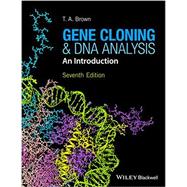Known world-wide as the standard introductory text to this important and exciting area, the seventh edition of Gene Cloning and DNA Analysis addresses new and growing areas of research whilst retaining the philosophy of the previous editions. Assuming the reader has little prior knowledge of the subject, its importance, the principles of the techniques used and their applications are all carefully laid out, with over 250 clearly presented four-colour illustrations.
In addition to a number of informative changes to the text throughout the book, the chapters on DNA sequencing and genome studies have been rewritten to reflect the continuing rapid developments in this area of DNA analysis:
- In depth description of the next generation sequencing methods and descriptions of their applications in studying genomes and transcriptomes
- New material on the use of ChiP-seq to locate protein-binding sites
- Extended coverage of the strategies used to assemble genome sequences
- Description of how the Neanderthal genome has been sequenced and what that sequence tells us about interbreeding between Neanderthals and Homo sapiens
Gene Cloning and DNA Analysis remains an essential introductory text to a wide range of biological sciences students; including genetics and genomics, molecular biology, biochemistry, immunology and applied biology. It is also a perfect introductory text for any professional needing to learn the basics of the subject. All libraries in universities where medical, life and biological sciences are studied and taught should have copies available on their shelves.








